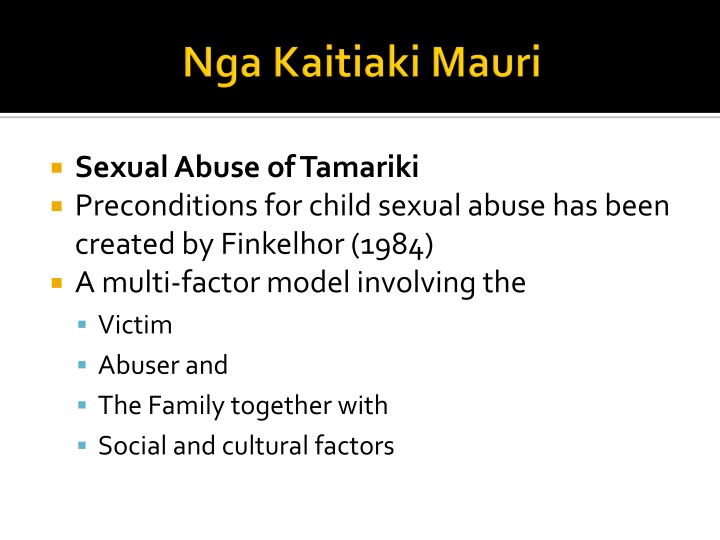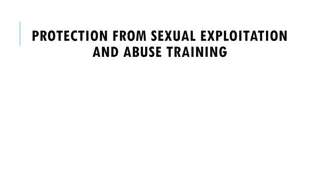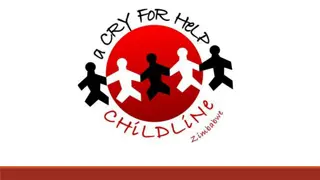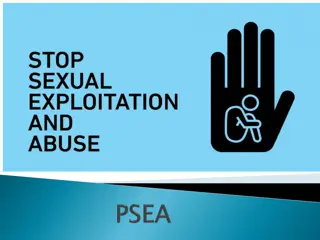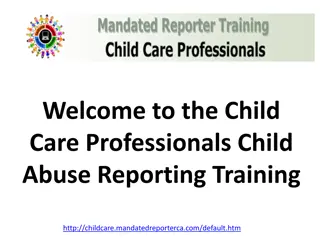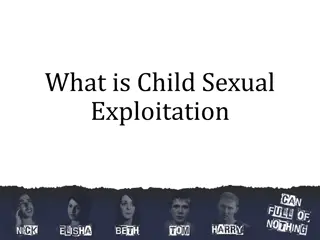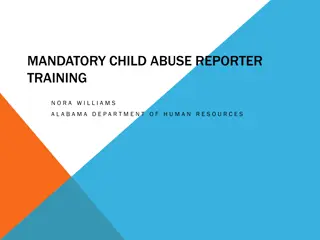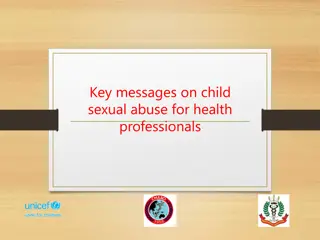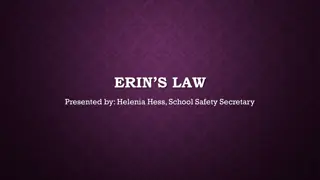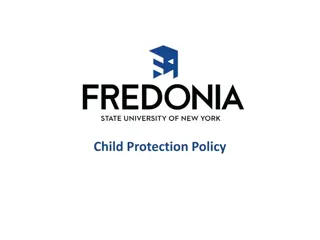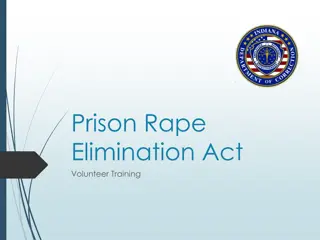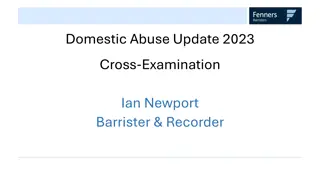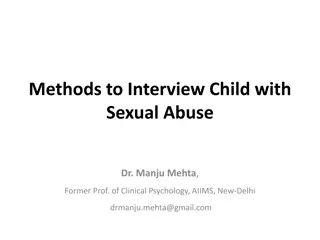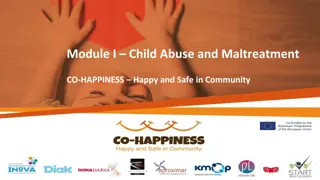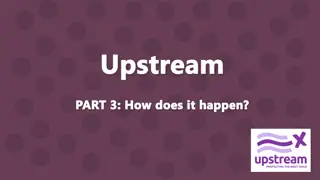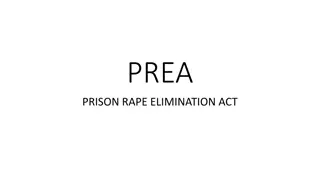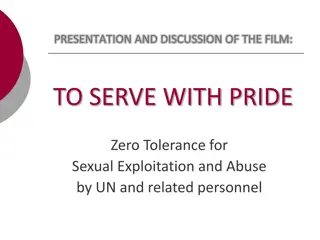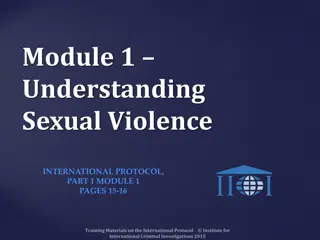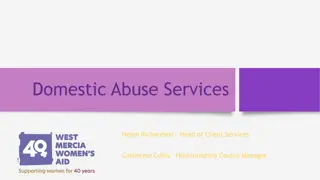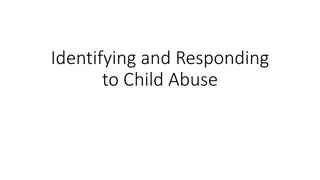Preconditions for Child Sexual Abuse Model
A multi-factor model by Finkelhor (1984) outlines preconditions for child sexual abuse including psychological and sociological factors. It discusses the motivation of abusers, internal and external inhibitors, and managing intentions within whanau. The model emphasizes the importance of understanding abuse through intent, action, and impact, highlighting the need for vigilance within homes and communities. Different perspectives on intentionality from the World Health Organization and New Zealand are considered.
Download Presentation

Please find below an Image/Link to download the presentation.
The content on the website is provided AS IS for your information and personal use only. It may not be sold, licensed, or shared on other websites without obtaining consent from the author.If you encounter any issues during the download, it is possible that the publisher has removed the file from their server.
You are allowed to download the files provided on this website for personal or commercial use, subject to the condition that they are used lawfully. All files are the property of their respective owners.
The content on the website is provided AS IS for your information and personal use only. It may not be sold, licensed, or shared on other websites without obtaining consent from the author.
E N D
Presentation Transcript
Sexual Abuse of Tamariki Preconditions for child sexual abuse has been created by Finkelhor (1984) A multi-factor model involving the Victim Abuser and The Family together with Social and cultural factors
Psychological factors Motivation of the abuser Existence of internal inhibitors Ego and strength of the child
And Socialogical factors Male socialisation Pornography Social tolerance of eroticising children Unequal power relationships between tane and wahine Patriarchal prerogatives of fathers and men
The four pre-conditions influencing sexual abuse of tamariki Motivation of perpetrator: The abuser is willing to act on impulses associated with sexual arousal related to tamariki Overcoming internal inhibitors: The abuser ignores internal barriers against sexually abusing tamariki
External inhibitors: The abuser is able to bypass the typical barriers in the caregiving environment of whanau members, that normally serve to impede the sexual abuse of tamariki. Overcoming resistance of tamariki: The abuser is able to manipulate tamaitito the point of involving the tamaitiin the sexual activity.
Such a model confirms the pre-requisites of abuse against another person INTENT ACT IMPACT Equally important is how whanau manage people with this intention, in their own homes.
World HealthOrganisationdefinition focuses on the intentionality of violence, an essential aspect to keep uppermost in our minds when looking at how violence is viewed in NZ. New Zealand places less importance on the notion of intentionality, and rather more on the harm caused.
Nga Kaitiaki Mauri supports Whanau hui as one way to ensure that they hold the mana of their own whanau by knowing what everyone in their whanau is doing at any given time who is being introduced into their whanau through friends and new partners Where are tamariki / rangatahi & with who Know what everyone is doing on internet/mobiles
Mana enhancing practices for whanau to practice, which shows the historical aspects of violence in whanau as a new concept since the intention of colonisation. Value the role of whakapapa and narratives within whanau Understanding wellbeing concepts of whanau Mana enhancing practices respects the mana and tapu of individuals, their whanau, their whakapapa, and also enchancesyour own through this practice
